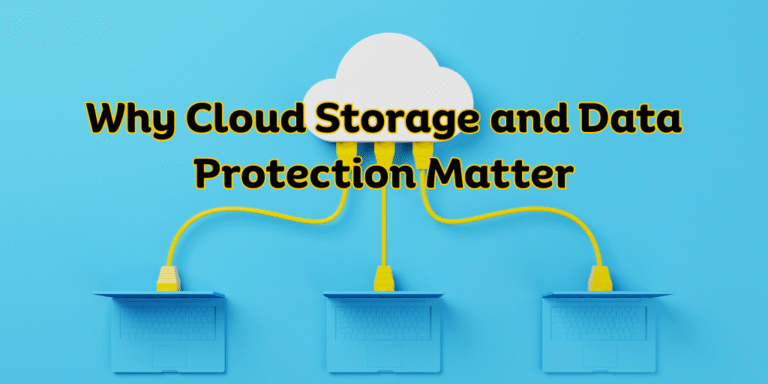Why Cloud Safety Matters
Today, most businesses use cloud tools. They store files, run apps, and share info online. But more cloud use also means more risk. Hackers always look for weak spots. That’s why keeping your cloud safe is so important.
How to Keep Cloud Systems Safe
To stay safe, follow these steps:
- Use layers of protection
- Set strong login rules
- Keep all tools updated
- Monitor your system 24/7
- Lock your data with encryption
- Train your team
- Use tools like firewalls and smart tech (AI)

Why Cloud Safety Is Important
The cloud helps save time and money. But it has risks too:
- Leaked Info: One small mistake can share your data with others
- Work Stops: Attacks can shut your system down
- Legal Trouble: You must follow rules like GDPR or HIPAA
5 Simple Ways to Protect Your Cloud
1. Use Zero Trust Rules
Microsoft says Zero Trust can lower damage by 50%.
- Check every login
- Divide big systems into small parts
- Watch everything, always
2. Turn on MFA (Multi-Factor Login)
Google says MFA blocks 99.9% of bot attacks.
- Use codes from an app or SMS
- Try face or fingerprint unlock
3. Lock Your Data (Encryption)
IBM says locked data is 70% safer.
- Lock data when stored or sent
- Use strong locks like AES-256
- Keep your keys safe

4. Update Often
Most attacks happen because systems are old.
- Turn on auto-updates
- Fix weak spots fast
5. Watch Logs 24/7
Watching logs helps you fix issues twice as fast.
- Use smart tools like SIEM
- Add alerts with AI
- Set rules to act fast
7 Big Cloud Risks to Avoid
- Open files or storage with no lock
- Weak or broken APIs
- Easy or reused passwords
- Staff using apps without checks
- Inside users doing harm
- Unsafe third-party tools
- Rules about where data is stored
Tips to Stop Cloud Attacks
Write Clear Rules
- Make cloud rules easy to follow
- Check for weak spots often
- Train your team on safety
Use Smart Tools
- Firewalls
- Device checks
- Tools (like CASB) to track cloud use

Pick Trusted Cloud Providers
- Go with top names like AWS or Azure
- Know what parts they handle and what parts you must manage
Cloud Security Comparison Tables
Cloud Providers: What They Offer
| Feature | AWS | Azure | GCP |
|---|---|---|---|
| MFA Support | ✅ | ✅ | ✅ |
| DDoS Protection | ✅ | ✅ | ✅ |
| Built-in SIEM | CloudTrail | Sentinel | Chronicle |
| Auto Updates | Some | ✅ | ✅ |
Encryption Methods
| Method | Best For | Speed | Security |
|---|---|---|---|
| AES-128 | Most files | Fast | Medium |
| AES-256 | Secret files | Slower | Very high |
| RSA-2048 | Key sharing | Slowest | Top level |
Old Systems vs. Cloud
| Feature | Old Systems | Cloud Systems |
|---|---|---|
| Firewalls | Strong | Needs more |
| Growth | Hard | Easy |
| Cost | High | Low/flexible |
| Updates | Manual | Auto in most |
What Experts Say About 2025
In 2025, cloud safety will be smarter and stricter:
- Smart Tools: AI will catch threats fast
- Better Locks: New ways to block high-tech hacks
- Safe Code: Devs will build security right into apps
- More Rules: Countries will add stronger data laws
“In 2025, cloud safety will be as much about the law as about the tech.”
— Jane Doe, Cyber Lead at TechSecure
Your Simple Cloud Safety Plan
Step 1: Check What You Use
- Make a list of all tools
- Look for weak spots
Step 2: Make a Plan
- Write steps to fix each issue
- Choose smart tools to help
Step 3: Take Action
- Set strong login rules
- Lock your data
- Monitor systems every day
Step 4: Keep Reviewing
- Check your system often
- Update your plan every 3 months

FAQs
Q1: What are the biggest cloud risks?
Open files, weak logins, and bad APIs.
Q2: Is cloud safer than a local server?
It can be, but only if you set it up right.
Q3: How do I know if my cloud is safe?
Use scan tools, check logs, and track activity often.
Q4: Is cloud safety too costly for small teams?
No. Many tools are free or low-cost and easy to use.
Wrap-Up
Cloud systems help your business grow. But without safety, you could lose everything.
Now you know the steps. Follow them today. Don’t wait for an attack.
[Download the free SR Security Checklist now!]


